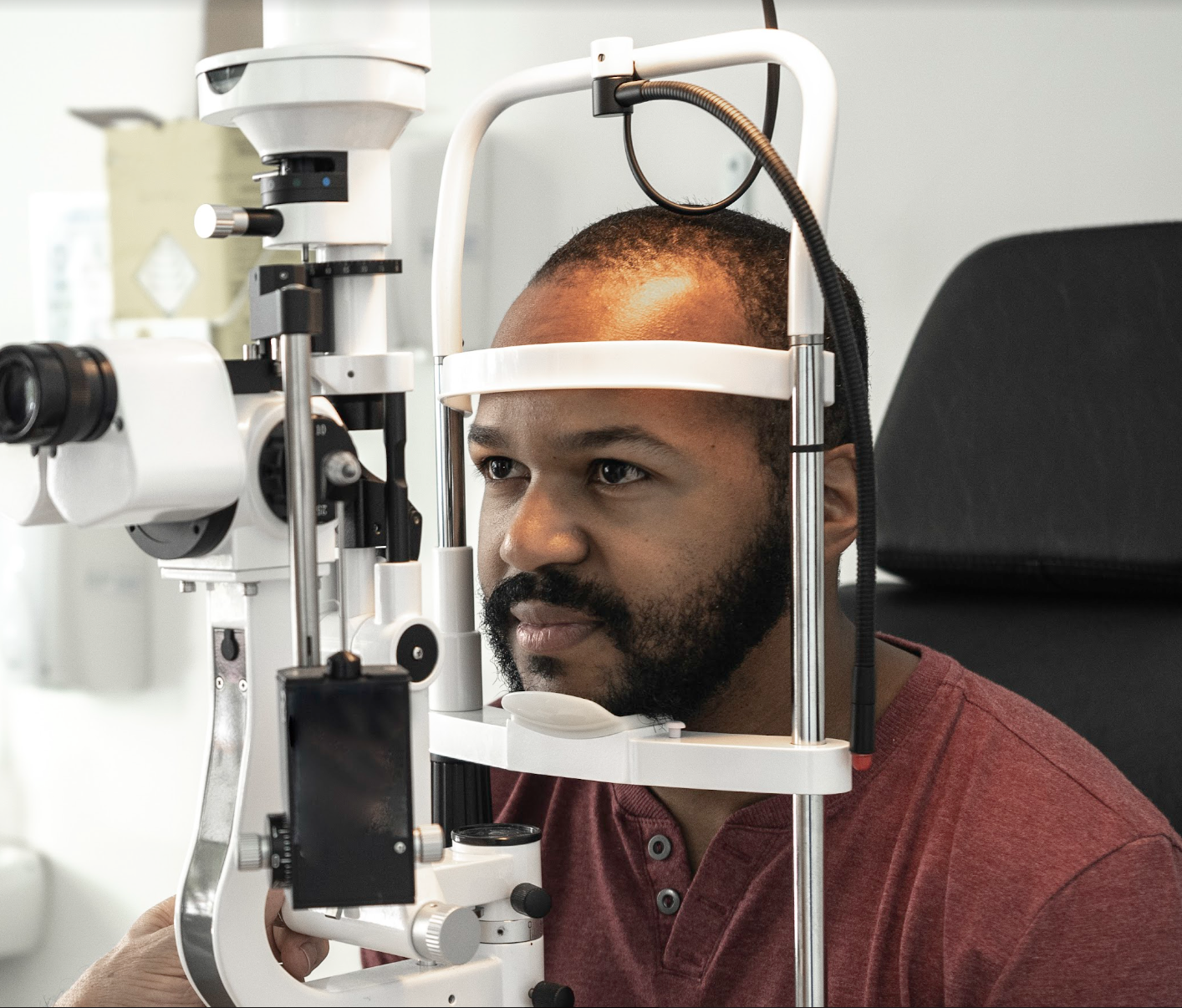 |
| The MI-SIGHT program placed two clinics in cities with high proportions of Black Americans and lower socioeconomic status, as these groups face a higher risk of many eye diseases, including glaucoma and DR. Photo: Getty Images. |
Telemedicine is often touted as a means of extending access to health care, particularly for populations with intractable obstacles in their lives and behaviors. Many aspects of eye care, however, are not amenable to purely online consultations, as direct examination with the proper equipment is not possible when patients remain at home.
An emerging model that relies on in-person patient exams conducted by techs rather than optometrists or ophthalmologists seeks to thread this needle.
One such effort funded by the CDC and conducted at the University of Michigan, called the Michigan Screening and Intervention for Glaucoma and Eye Health through Telemedicine (MI-SIGHT) program, sought to engage those at high risk of glaucoma. The program recently reported its first year outcomes and costs.
Ophthalmic technicians collected demographic data, visual function and ocular health history, measured visual acuity, refractive status, intraocular pressure, pachymetry and pupils, and recorded mydriatic fundus photographs and retinal nerve fiber layer OCT scans. These findings were interpreted remotely by ophthalmologists. At follow-up visits, the technicians shared the ophthalmologists’ recommendations with patients, gave out low-cost glasses and asked about patient satisfaction. Outcome measures included eye disease prevalence, visual function, program satisfaction and costs.
Patients over 18 years of age were recruited and assessed in two clinics of Michigan cities with high poverty levels: Flint, with 37% of the population under the poverty limit and Ypsilanti, with 30% of the population under the poverty limit. Both cities have higher Black American percentages than the national average of 14%, with 27% Black Americans in Ypsilanti and 54% Black Americans in Flint.
Of the 1,171 participants enrolled, 38% were male, 54% were Black, 34% were white, 10% Hispanic and 33% had less than or equal to a high school education. Income level was less than $30k for 70% of these patients.
Prevalence of conditions were higher in all categories compared with national averages, with 10.3% visual impairment prevalence (national average 2.2%), glaucoma and suspected glaucoma 24% (national average 9%), macular degeneration 2.0% (national average 1.5%) and diabetic retinopathy 7.3% (national average 3.4%).
Low-cost glasses were administered to 71% of patients, 41% were referred for an ophthalmologist follow-up and 99% were satisfied with the program. Overall, $103,185 was the start-up cost and recurrent costs totaled $248,103 per clinic.
The authors of the study note that the clinics were placed in cities with high proportions of Black Americans and lower socioeconomic status because these groups experience increased risk of many eye diseases, including glaucoma and diabetic retinopathy.
Accordingly, they wanted to make access to eye care easier for populations with higher disease rates. The researchers posit this decision might explain why the rates of the MI-SIGHT program are much higher than national rates. The authors continue that placing these types of programs in similar communities across the country “could present a targeted national screening strategy that is more cost effective than campaigns that encourage people to visit an eye doctor for screening.”
The authors do additionally make aware that a big setback to this approach is the Medicaid flat rate determined for patients visiting a federally qualified health center, which may not sufficiently cover costs for the clinic’s new equipment or clinician salaries.
They do caution that in implementing this type of clinic, “start-up costs alone for the MI-SIGHT program were approximately $100,000 per clinic site, which is likely beyond the capital capacity for many federally qualified health centers and free clinics that often operate on a tight budget.” Although this may be the case, the outcomes seen in the population’s satisfaction is worth solving these issues.
Newman-Casey PA, Niziol LM, Elam AR, et al. Michigan Screening & Intervention for Glaucoma and Eye Health through Telemedicine Program: First Year Outcomes and Implementation Costs. Am J Ophthalmol. March 9, 2023. [Epub ahead of print]. |

